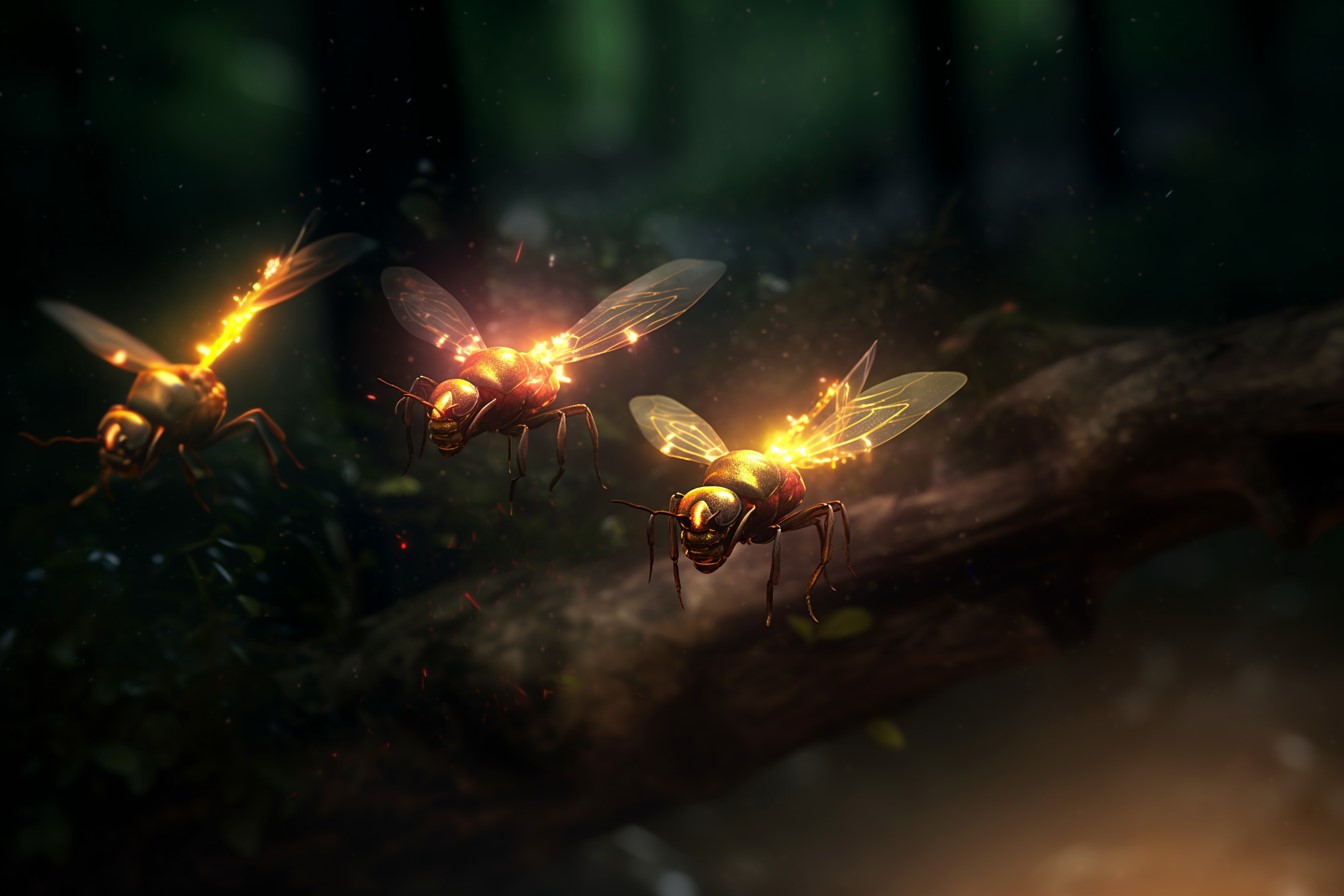Lightning Bug Communications
A study of lightning bugs and electricity generated by magic for communications
Lightning Bugs: Insects using magical lightning to communicate.
By VanLief Aericksen
In the middle of Selioria, in the rolling, rocky grasslands in the center of the country, the lowly lightning bug lives its small short life, generations beginning and ending in the short nine weeks of summer before those still alive finally die, leaving behind multitudes of eggs that will wait patiently for the next summer before hatching, living and dying as their parents and ancestors have for thousands of years. These small, unremarkable insects would go practically unnoticed and unremarked, except for two remarkable features.
One, these small flying insects can use magic. They may not be the only animal or even plant on Rit to do so, but they are the least intelligent creature documented to use magic with a purpose.
Two, these creatures communicate among themselves using magically generated, tiny, bursts of lightning. Not a chemical light like some fish, not a magical light like the navigation towers of the mountains of Malminar, but magical lightning that arcs between their small wings while flying or sitting still with wings spread wide.
The flashes of lightning have been verified to be generated by magic many times by multiple Wizards. Just being in the presence of a number of these bugs flying about a field can make any Wizards hair stand on end with the feeling of tiny bits of magic being done. The forces a large number can create are enough to send overly sensitive Wizards running for the nearest flowing water source.
The idea that these seemingly random flashes of light could be a means of communication between individual insects was first brought to me by a farmer friend of mine a few years ago. He's been experimenting with a mix of salt and oil on his crops to keep the voracious bugs off a small field of wheat when he noticed the bugs flashing in groups and a specific pattern. The flashing seemed to warn others off the treated field after some number of them had died after exposure. The next night the farmer watched as the flashes seemed to coordinate again in a different pattern, larger and larger swarms of the bugs gathered on the edges of the field until just before the midnight, large groups of the flashing insects flew into the field and began to generate great flashes all together. The field began to burn and the bugs flew away and avoided the fields around for several nights before returning to their normal patterns a few nights later.
Others in the area experienced similar behaviors as they tried the same new concoction on their fields. Perhaps these bugs are more intelligent than we think.
I have observed the lightning bugs for a full 9 weeks now this summer, and I can tell you that communication is a definite reality, not only that, but different colonies of bugs from different areas use different blink-codes. There does seem to be a core set of blink-codes common to all of the colonies I have observed and I have not yet spent time in hills of Kenitt where other lightning bugs live, but I suspect the core blink-codes may be different in such geographically separated groups.
The blink-codes appear to cover communication for mating, warnings, directions to fertile feeding grounds, and what may be territorial disputes. A further study over the next three turns will attempt to document the patterns and meanings of as many of the colonies in Selioria as I can physically observe with a follow up by my colleagues of the swarms in Kenitt.
By VanLief Aericksen
A report on the communication of lighting bugs using magical lightning in the grasslands of Selioria
Read more in the books "The Minds of Gods and Demons" beginning with the first book,








Ok, you had me at lightining communication, but adding bug ? Brilliant, fantastic, so creative ! I love the fact it's written in the P.O.V of a scientist, which gives an immersive side to the reading that I love. The idea of wild life being more intelligent than we thought also rings bells of realism for me. The article is pretty and the reading was entertaining. I'm glad I found your world !
Thank you so much! I am thrilled you liked it! I must admit I am blushing a little bit!